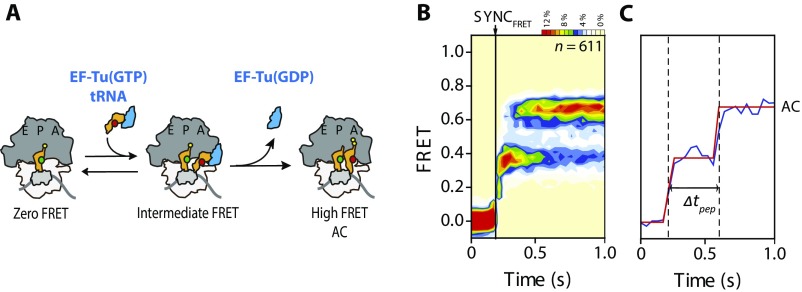Fig. S2.
Quantitation of the rates of aminoacyl (aa)-tRNA accommodation for PRE complexes programmed with cognate and near-cognate peptidyl-tRNA anticodon/mRNA codon pairs in the A site. (A) Rate of aa-tRNA accommodation at high (15 mM) magnesium concentrations was calculated as described by tracking FRET between acceptor (red)-labeled EF-Tu(GTP)/aa-tRNA ternary complex and donor (green)-labeled 70S initiation complexes programmed with specific mRNA codons in the A site (Table S2). (B) Following delivery of EF-Tu(GTP)/aa-tRNA ternary complex (UUC in this histogram), traces are synchronized to the appearance of FRET to analyze the population behavior of tRNA selection. A fully formed PRE complex (one in which peptide bond formation has occurred after completion of tRNA selection) is defined as exhibiting a relatively stable (>120-ms duration) high-FRET (accommodated) state. (C) Accommodation time Δtpep was defined as the time between the first nonzero FRET dwell and the first stable (>120 ms) high-FRET–state dwell. kpep was calculated as the average accomodation rate based on exponential fits to the Δtpep distribution. Data were acquired at a 40-ms time resolution. The number (n) of individual FRET trajectories in each histogram is indicated.

